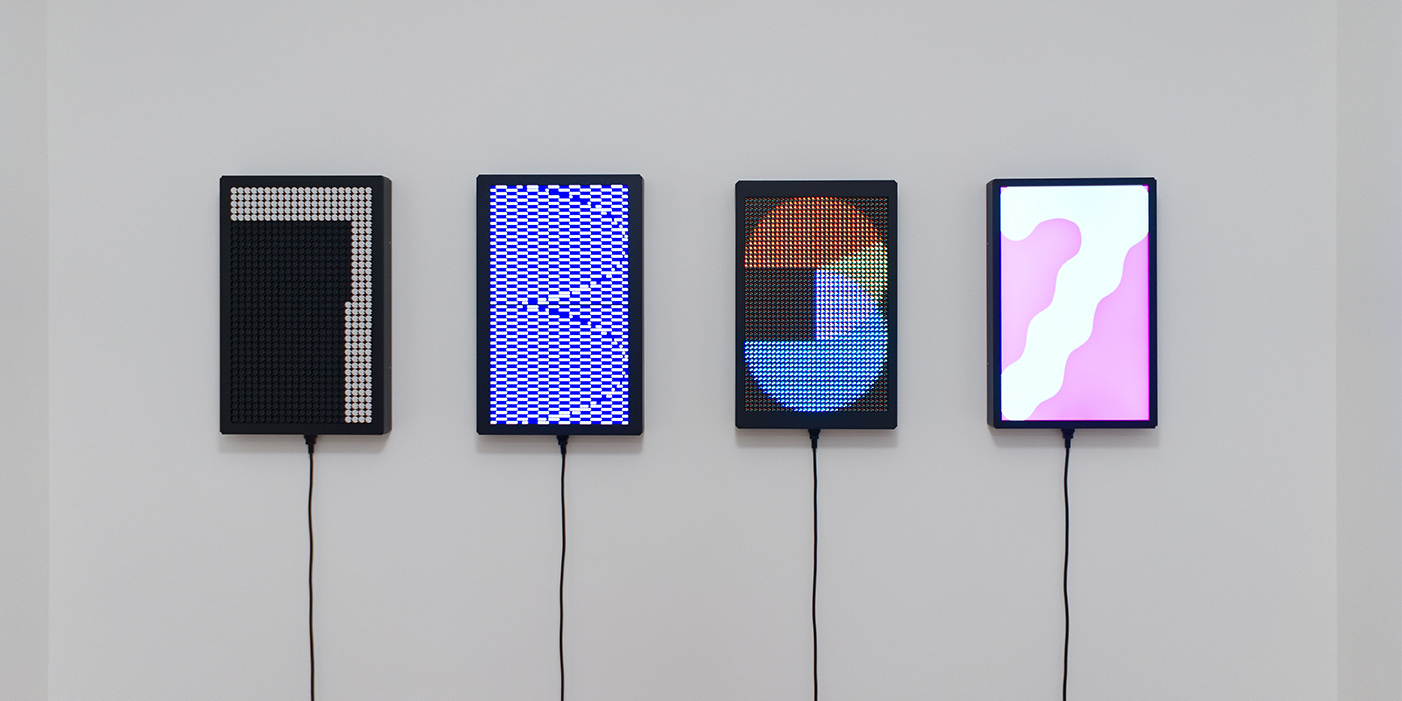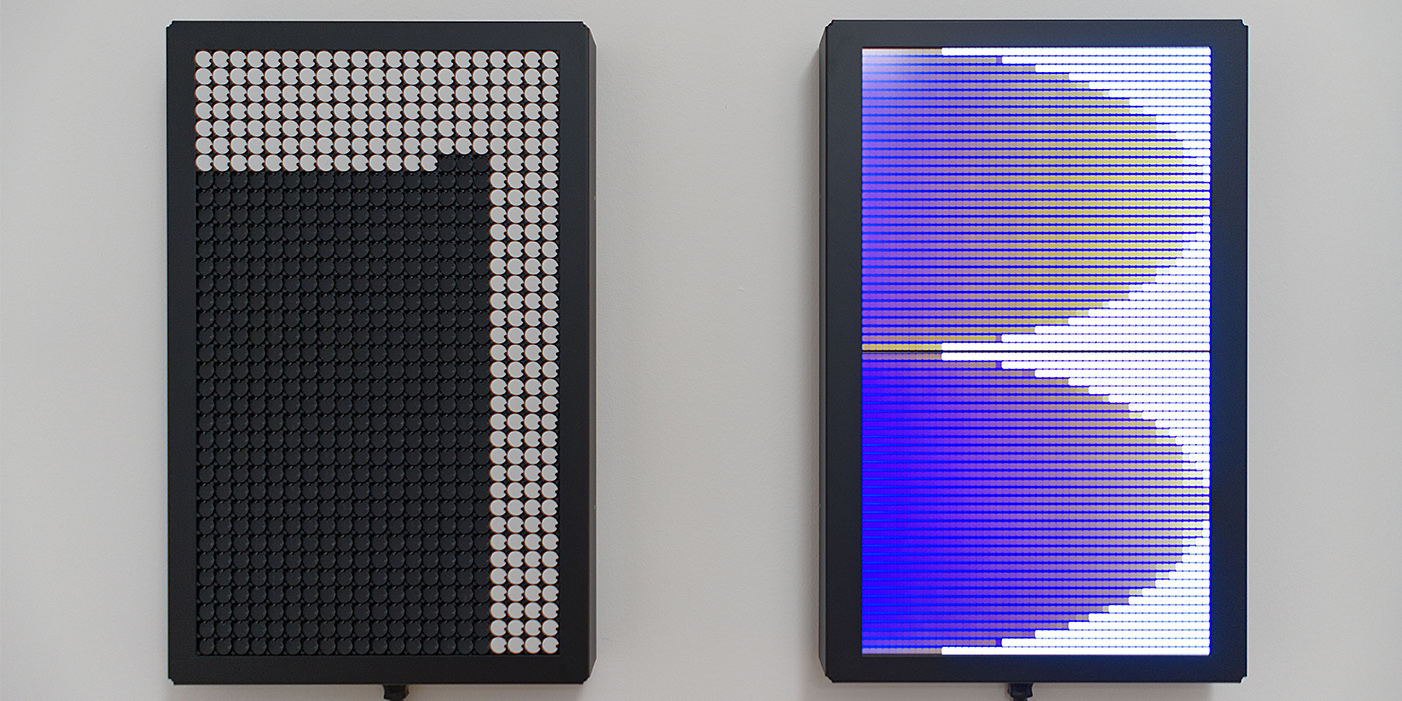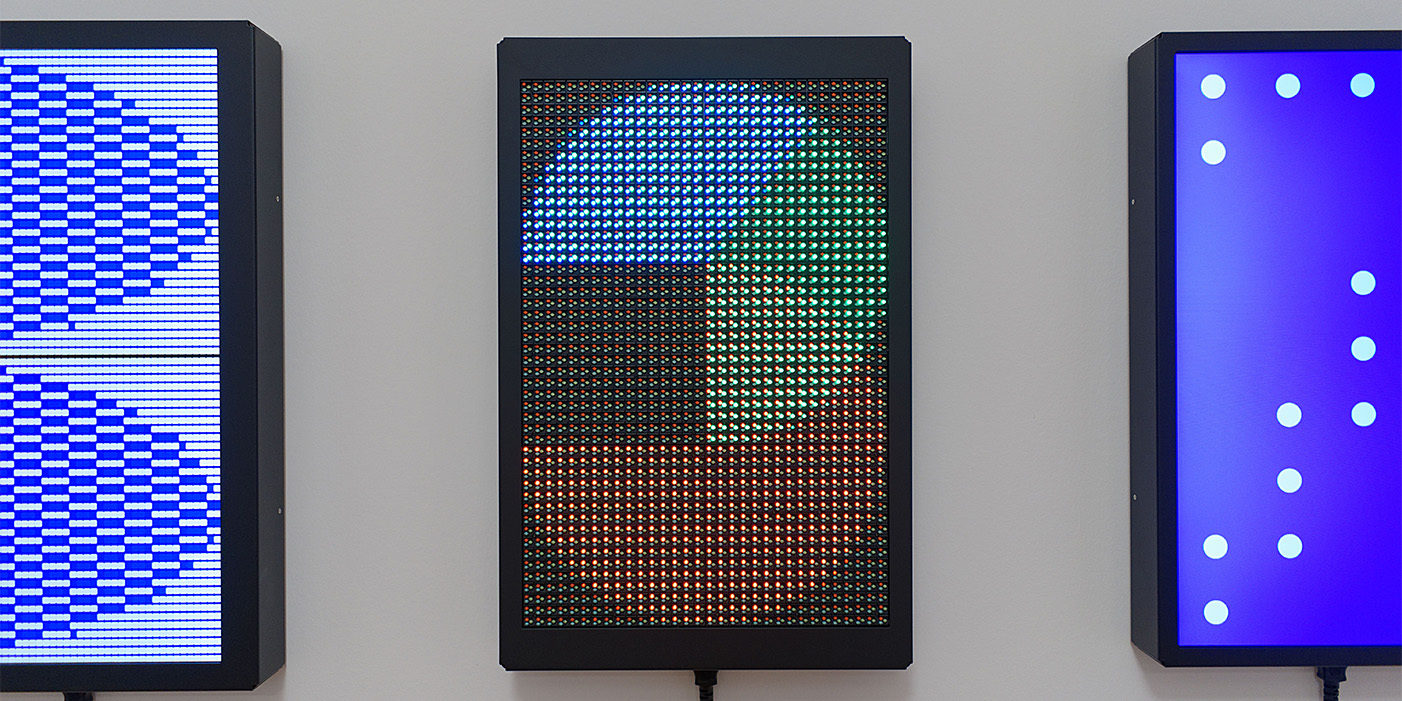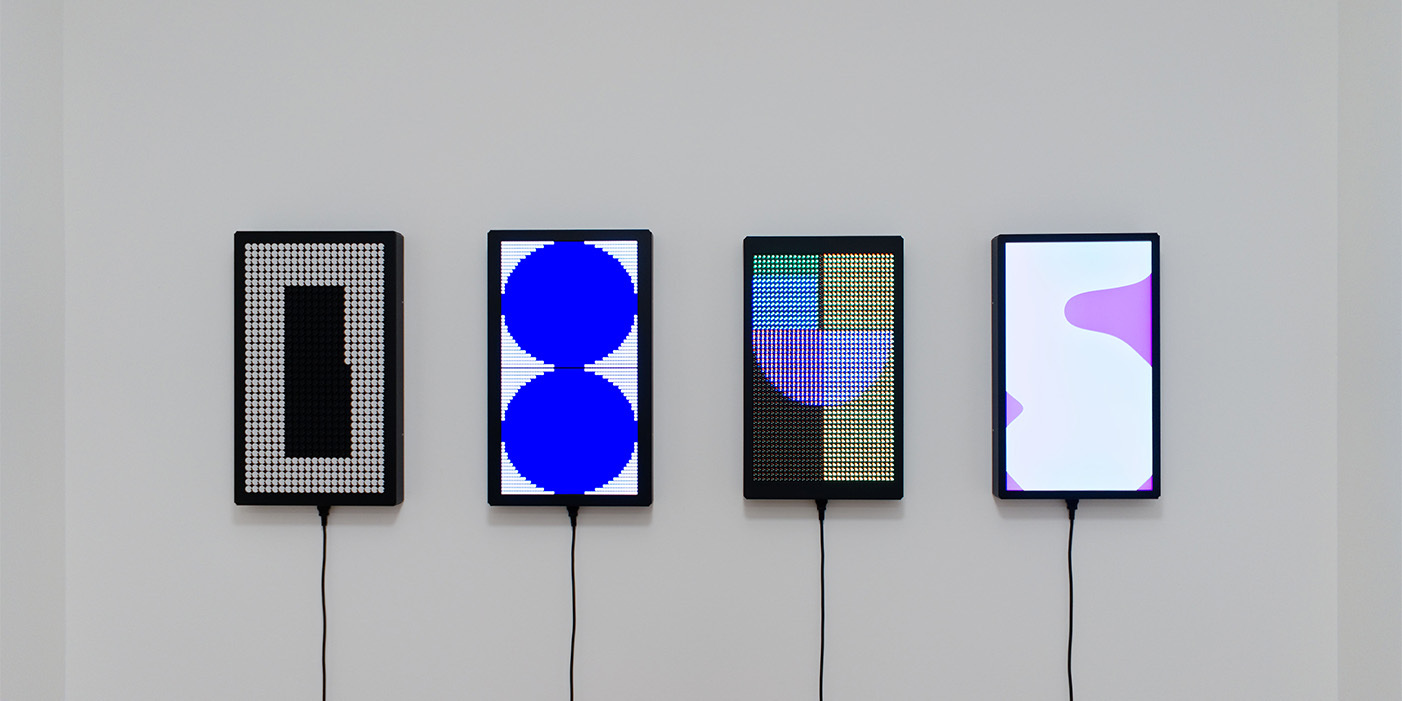Jürg Lehni
Four Transitions

Interdisciplinary Swiss artist Jürg Lehni’s installation Four Transitions (2020) consists of four boxes mounted on a wall, each of which shows the process of a number being created in a distinctly different colour and technology.
In the context of new media and internet-based art, where definitions of art are open and the relation of moving image and work structures to the viewer are central, the work’s performative aspect comes to the fore, the question of how things are represented? Since Postmodernism, looking at the semiotic aspect of art, the question of what is represented, has proven to be either too straightforward or too ubiquitous to really do justice to the work. The «What?» here is easily answered: Four Transitions represents a real-time digital clock. The work reveals its depth more clearly when this simplicity of the semiotic aspect is juxtaposed with the complexity of the work’s performativity.
The large black boxes, almost equal in size, were custom-made for the technology they house. Viewed from left to right, they give a diachronic summary of the technological development of displays in public space since the 1950s. Each contains a microcomputer that communicates with the others; one is online to obtain the precise time at the current location. All the displays calculate their representation in real time, rebuilding each digit once a minute. This results in a quasi-infinitely changing interaction of the four displays in real time. In addition to the coincidence between current time and the historicity of the technologies, the self-reflexive aspect of the work lies in the constriction of the duration of the work to the real time that viewers spend looking at it.
The first figure is represented by means of a black and white flip-dot technology from the early 1960s. The individual matte panels of the black-and-white dot grid are flipped electromagnetically. They give off the sound of the characteristic click familiar from departure boards at railway stations and airports, for example each minute a one is recreated anew. The contours of the second digit are clearly defined by a violet-blue-white grid of LCD liquid crystals, characterised by the luminous rectangles with rounded corners that have been commonplace in elevators, for example, since the 1970s and 1980s.
The first number of the minute display is displayed via an early type of LED dot grid in which each dot still consists of a separately controllable red, green and blue lamp, thus enabling colour-intensive op-art transitions during the creation of the numbers. Since the turn of the millennium, the presence of LED displays in public urban spaces has increased. Here, the lively brightness of changing interplay of primary colours contrasts with the monochrome panels of the hour numerals. Finally, the second digit of the minute display uses a contemporary display technology based on TFT thin-film transistors, played by a hardware-accelerated graphics card. However, it too is already being replaced by newer formats available on the market. The contours of this digit, which changes every minute in the softest, almost seamless flow, are fine and show no visible pixel grids, as colour transitions melt into each other in a painterly manner.
The artist’s extensive examination of the specific aesthetic qualities of the individual technologies and external collaboration with specialists, which preceded Four Transitions, are directly transferred to our perception. The work’s embodiment and exploration of the display medium brings both intentional and accidental aesthetic visual languages, that have been used or discovered, to light, such as the soft transition between opaque and transparent of the LCD liquid crystals.
Four Transitions draws attention to the sensual experience of the aesthetic qualities each technology offers. Be it the hypnotic domino-effect clarity of the matte flip-dot panels, the staggered transitions in the luminous grid of the LCD display, the vivid, rapidly overlapping primary colours of the LCD grids and finally the seductively seamless flowing transitions of the TFT programming. Besides this sensual quality, the
four historical technologies also carry an emotional presence, recalling familiar situations of existence, depending on the viewer’s experience and subconscious memory. The unmistakable aesthetics, which genuinely arise from the characteristics of the technologies themselves, are immediately accessible in real time.
The work Four Transitions is based on a concept that the artist developed in 2014 in collaboration with Alex Rich.
Text: Bettina Back






